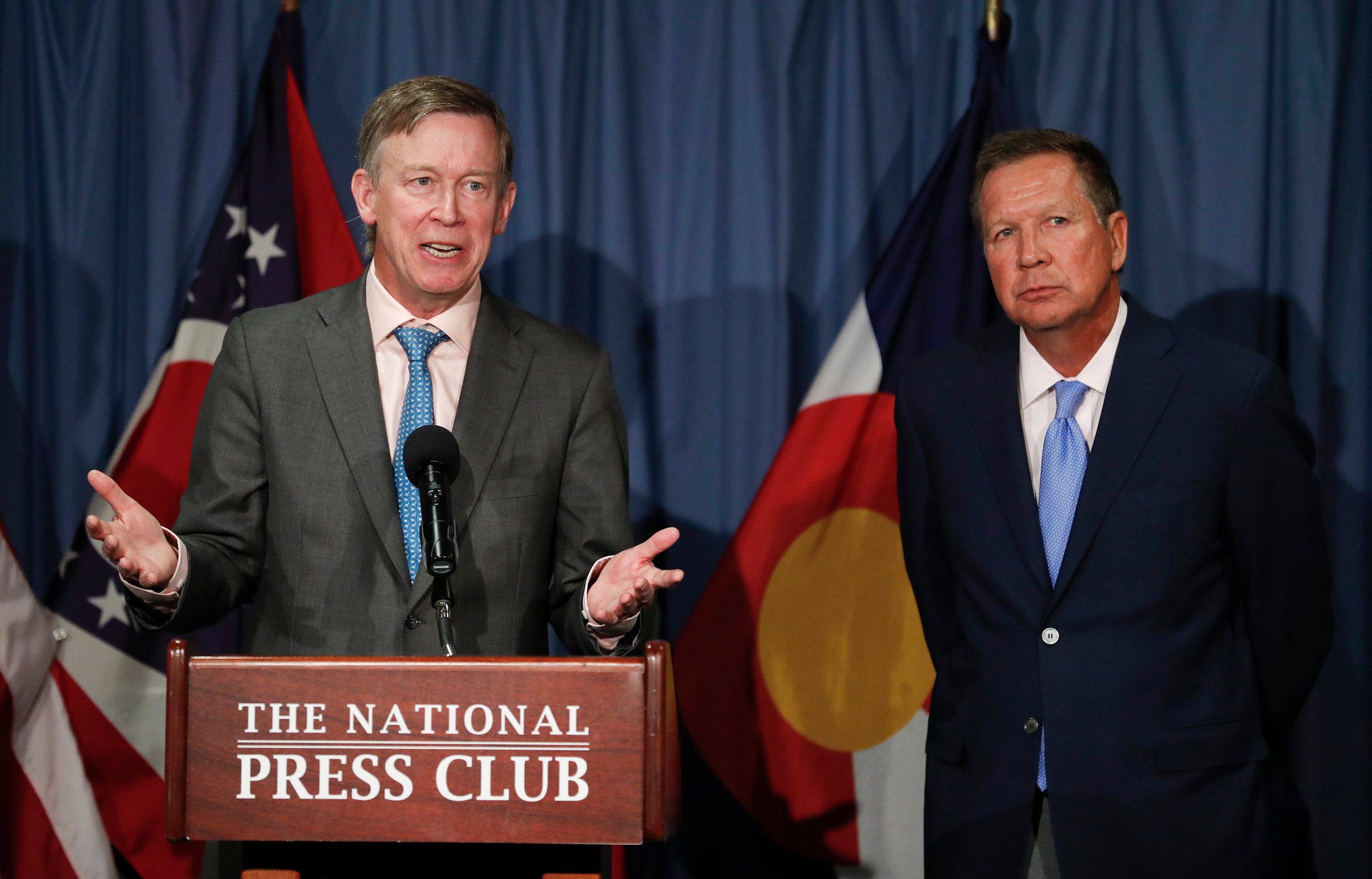
As recently as late July, Congress appeared at the end of the health care road with its one-way, one-sided, closed-door approach to repairing the Affordable Care Act. Now, little more than a month since failing to move forward with their partisan efforts, Republicans and Democrats in Congress are working together on something all sides can agree upon: restoring stability to our individual health insurance markets.
This is an obvious place to start. Nearly 22 million Americans are caught up in the volatility of the individual health insurance market. Many are struggling to afford coverage and often have a limited menu of plans to buy on their exchange.
We have been working for months — on both sides of the aisle — to create a framework to build an improved health insurance system that is available and affordable to every American. While we are not telling Congress what to do, we think Governors have a unique perspective on what works and on how we can collaborate on a solution.
The first step Congress will hopefully take is immediate action to stabilize the health insurance markets. Health insurance carriers are facing an October 1st deadline to commit to participating in the exchanges, so there’s little time to waste. Insurers need to know that the exchanges will be viable into the future, and both the legislature and the Trump Administration can play a part in sending that signal. This would include a commitment by the White House and Congress to continue cost-sharing subsidies in the near term.
This also means leaving in place the individual mandate, temporarily. This provision is unpopular, but it is a major factor in encouraging healthy young people to get coverage and avoiding a collapse in the marketplace. The individual mandate should remain until the federal government can develop an equally effective approach, or until states can develop their own customized approaches within existing guardrails like preserving recent coverage gains and controlling cost.
Other crucial reforms to stabilize markets include creating a temporary, two-year stability fund that states can use to minimize market disruption during the transition to a longer-term solution. We also must support and strengthen federal risk-sharing programs and fix the “family glitch,” which leaves too many working families without access to affordable coverage.
Meanwhile, Congress should work to encourage more insurers to enter the health insurance markets in areas where there is only one insurance option. Until other reforms take hold to change the dynamics in today’s market, Congress could exempt insurers entering underserved areas from the health insurance tax — or allow residents in underserved counties the option for coverage through the Federal Employee Benefit Program.
As Washington begins to stabilize markets, states will step in with additional reform strategies to bring longer-term stability to markets. In many cases, states already have the ability to make significant improvements but have chosen not to do so in light of the uncertainty about the future of the Affordable Care Act. There is no shortage of good reform ideas for states to achieve this. This will create larger, more stable insurance pools and reduce costs.
Despite the ability of states to put in motion needed improvements, in some cases innovation is being stifled because of federal regulations and the constraints within the Affordable Care Act. That’s why the federal government should work with states to improve the regulatory environment. Most importantly, the federal waiver process needs to be streamlined to allow states greater flexibility in pursuing innovative strategies to preserve coverage, cut costs and strengthen our nation’s health insurance markets.
Finally, we need reforms that encourage innovation. Consumers need more information about the price and quality of health care services, and we should create new tools to make meaningful information available. As important, the federal government should do more to move the system away from an outdated, fee-for-service model that rewards more care, toward a value-based system that rewards better care. By providing incentives for better care, we can begin to fix the rising cost of health care and improve health outcomes. This is already beginning to happen in our states, where we are increasing access to comprehensive primary care and rewarding specialists who focus on quality over quantity.
It’s encouraging to see both parties coming together — especially after a tumultuous and divisive spring and summer. By listening to each other and working together, we can move steadily toward quality health insurance that is available and affordable for every American.
More Must-Reads from TIME
- Why Trump’s Message Worked on Latino Men
- What Trump’s Win Could Mean for Housing
- The 100 Must-Read Books of 2024
- Sleep Doctors Share the 1 Tip That’s Changed Their Lives
- Column: Let’s Bring Back Romance
- What It’s Like to Have Long COVID As a Kid
- FX’s Say Nothing Is the Must-Watch Political Thriller of 2024
- Merle Bombardieri Is Helping People Make the Baby Decision
Contact us at letters@time.com